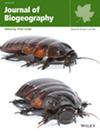The changing frequency and intensity of climatic extremes due to climate change can have sudden and adverse impacts on the distribution of species. While species distribution modelling is a vital tool in ecological applications, current approaches fail to fully capture the distribution of climatic extremes, particularly of rare events with the most disruptive potential. Especially at the edges of species' ranges, where conditions are already less favourable, predictions might be inaccurate when these extremes are not well represented.
Europe.
Tree species.
We present a novel approach to integrate extreme events into species distribution models based on the generalised extreme value (GEV) distribution. This distribution, following from the extreme value theory has been established as a valuable tool in analysing climatic extremes, both in an ecological context and beyond. The approach relying on the GEV distribution is broadly applicable, readily transferable across species and relies on widely available data. We demonstrate the efficacy of our approach for 28 European tree species, illustrating its superior ability to fully capture the distribution of climatic extremes compared to state-of-the-art methods.
We found that incorporating parameters on climatic extremes derived from the GEV distribution increased model performance (AICmodel) and characterised range edges more accurately (AUCedge) compared to competing approaches. However, general AUC values were only marginally increased across the species and study period analysed. Overall, the GEV model predicted a narrower niche for the species included in this study.
Incorporating climatic extremes can impact spatial predictions of species distribution models, especially at range margins. We found that using the GEV distribution to characterise extreme variables in SDMs yields the best performance at these distribution edges. Given the importance of range edges for species conservation, a detailed inclusion of extremes in SDMs employed for those applications will help ensure robust conclusions.


